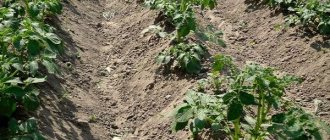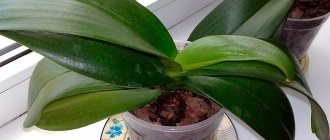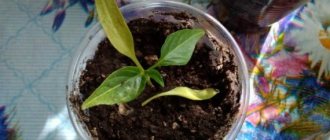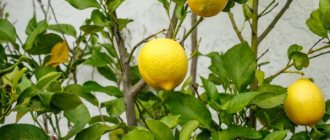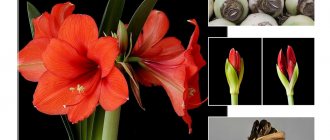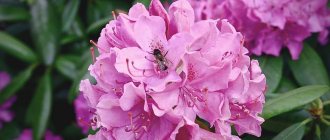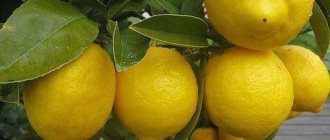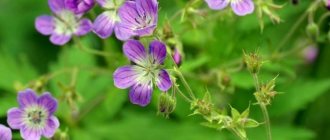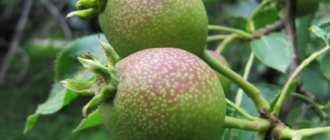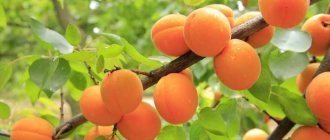Geraniums - description
The plant, which is commonly called geranium, is actually pelargonium. It belongs to the geranium family. The name "Pelargonium" is translated from Greek as "Stork", due to the resemblance of its fruits to the beak of a stork.
Pelargonium fruit resembles a stork's beak
True geranium is a plant that can often be found in forest or meadow areas. There are varieties bred for garden cultivation that winter well without shelter.
Some types of geraniums in the photo
Georgian
Lugovaya
Balkan
Katharina Adele
Oxford
Geraniums grow very quickly. Most species can be grown from seeds. When sown in autumn-winter, they bloom in the first year.
The Geranium family includes 5 genera and 800 plant species. Geranium leaves have a beautiful carved shape and are fragrant in many species. Leaf colors: green, variegated, with yellow veins, with red and yellow hues.
Green leaves of different shapes
Geraniums are an excellent antiseptic and have anti-inflammatory and other medicinal properties. Various extracts and essential oils are made from them.
It is very useful to keep pelargoniums at home; they disinfect and purify the air, and also repel flies, moths and mosquitoes. Leaves of aromatic species can be added to tea (in dry form).
The smells of such fragrant geraniums are so diverse that they can resemble anything: apple, rose, citrus, pine, caramel, pineapple, coconut, wormwood and so on! Most of them do not bloom as brightly as other pelargoniums, but they more than make up for this deficiency with their unique and healthy aromas.
Indoor pelargoniums are divided mainly into four types: zonal, thyroid (ampeloid), royal (large-flowered), fragrant (fragrant). There are a large number of varieties and hybrids of pelargonium.
Pelargonium - gallery
Ampelous pelargoniums can be kept outdoors in summer
Shield pelargoniums look great in hanging flowerpots along with other hanging plants
Pelargonium Fragrant with a pink-mint scent
Pelargonium cape with the scent of lemon
Zonal pelargoniums are distinguished by dense caps of inflorescences
Royal Pelargonium has large flowers
Types of geraniums
Initially, there were very few varieties of this plant, but with the help of hybridization, experts were able to develop new species that are capable of producing flowers of various shades. At the moment, there are more than 400 varieties of geraniums.
The most popular varieties:
- Room. This species requires virtually no care, which is why many gardeners have this variety. It can grow not only at home, but also outdoors, as it is resistant to changes in air temperature.
- Royal. This geranium, unlike other varieties, requires special care and attention. Therefore, you should study some features when caring for this beauty. For good care, she will give the owners lush bouquets of bright flowers.
- Ampelnaya. According to the conditions of detention, this species is similar to indoor geranium. The inflorescences are usually small, but in large quantities.
- Terry. Its difference from others is manifested in the shape and texture of flowering. This variety of geranium does not like high humidity, due to which the leaves and flowers can begin to rot.
- Rose geranium. The flowers of this variety resemble small roses. It begins to bloom profusely in the first year of life.
- Tulip-shaped. The flowers are distinguished by large shapes that resemble another beautiful flower - the tulip.
All varieties of geranium, with the exception of the royal one, grow well not only in an apartment or house, but also in the garden in summer, in flower beds in parks, in hanging bowls on a balcony or loggia.
Pelargoniums blooming
Pelargoniums bloom from spring until the onset of frost. The decorative effect of these plants lasts on average for five years. But with proper care, observance of rest time and proper pruning, pelargonium can live and bloom for more than 10 years.
Comfortable temperature for flowering pelargoniums is from +22 to +27°C.
For long flowering you need:
- at the beginning of plant growth, pinch above the fifth leaf to properly form the bush;
- do not plant in a pot that is too spacious, adding size only as the root system grows;
- place pelargonium on eastern and southern windows;
- do not allow the soil to flood;
- cut off yellow leaves;
- pick off fading inflorescences;
- do not overfeed the plant, especially with nitrogen;
- once a week add iodine to the water for irrigation: 1 drop of iodine per liter of water, 50 ml of solution for each plant;
- in summer, ventilate plants, protecting them from cold drafts;
- When flowering, try not to move the plant frequently.
Placing pelargoniums on northern and western windows significantly impairs flowering.
Pelargoniums need an abundance of light, but they still need to be protected from direct sunlight. Otherwise, the leaves may get burned.
With a lack of lighting, plants stretch out and stop blooming. Therefore, it is better to place them not in the back of the room, but in the brightest place.
If you do not have the opportunity to provide pelargonium with good lighting, then buy phytolamps, or ordinary fluorescent lamps with a yellow spectrum, for additional lighting.
Daylight hours for pelargoniums during flowering should be 12–14 hours.
How to make geraniums bloom
What could be more pleasing to the eye than blooming pelargonium at home? However, the plant is not always able to bloom magnificently and open its buds.
If geranium does not bloom, then you need to:
- Organize a cool winter with limited watering and fertilizing.
- Create conditions for the culture with differences. In summer, place the pot with the plant on the balcony, veranda, or transplant the geranium into the garden, while protecting it from drafts.
- When the geranium does not bloom and stretches upward, you need to change the location of the flower, moving it from one place to another. And once the buds appear, do not disturb the plant and try not to change the location of the pot.
- Apply a magnesium sulfate fertilizer. This will help improve decorative qualities, since this nutrient can prolong flowering and have a positive effect on the development of buds, as well as the brightness of the color of foliage and flowers.
- Feeding geraniums for flowering with iodine and peroxide serves as another lifesaver in solving these problems. In addition, plants will grow, develop better and get sick less often. Iodine for geraniums has a positive effect on budding, prolongs flowering, and makes the color of flowers more saturated. It is important not to violate the dosage when adding nutrients, otherwise the fertilizer may become toxic.
- An extract from ash, which is also considered an excellent stimulant for flowering crops, will help make geraniums bloom. To do this, take one liter of water and infuse wood ash in it in the amount of one spoon. Then drain the solution and use as directed. This product is popular among gardeners, since the presence of potassium, sodium and other microelements in the solution promotes the development of green mass and active flowering.
Before feeding geranium for abundant flowering, you need to read the instructions for using fertilizers. Knowing the reasons and their elimination, you can make even the most lazy flower bloom.
Conditions for lush flowering
Pelargonium is grown not only for its medicinal properties and unique pleasant aroma, but also for its beautiful inflorescences and fragrant leaves. Geranium seeds are valued for their abundant flowering, which can be sown in summer and before winter. Propagation by seeds should be carried out in February. To do this, place the seed material on moist, cultivated soil in small cups, sprinkle with soil, and cover with film. When shoots appear, lift the film material daily and remove accumulated condensate. The signal for picking is the formation of two true leaves. After 7 weeks of growth, the plants are planted in pots.
In order for the plant to form healthy buds and bloom fully, you need to help it gain vital resources by creating comfortable conditions for it, which include:
- choosing a container for planting of the appropriate size, which can serve as pots made of porous ceramics that can allow air to pass through;
- properly organized light regime, which plays an important role in the growth of flowers and is based on ensuring constant access of plants to sunlight;
- maintaining the temperature regime: in summer, non-blooming geranium will feel comfortable at a temperature of 20-25°C, and in winter – 10-15°C;
- compliance with soil moisture conditions, water only when the top layer of soil dries out;
- providing sufficient quantities of essential nutrients;
- carrying out timely pruning for maximum long flowering;
- regular inspection of the plant, for the timely detection of diseases and other problems associated with improper maintenance of geranium, as well as taking effective measures to save the plants.
Surrounded by care and love at home, geranium will reward you with rapid growth and gorgeous flowering.
Pruning rules
One of the reasons for the lack of flowering of a plant is improper pruning. Therefore, to form a bush with a compact, even shape and lush, stable flowering, the plant requires regular pruning in accordance with all the rules. In addition, this procedure helps:
- improving air exchange and lighting;
- extension of flowering period;
- acceleration of metabolism;
- the formation of a large number of lateral branches and young shoots;
- obtaining high-quality planting material for propagation of your favorite variety.
Many people are interested in whether it is possible to prune geraniums during flowering. The answer to this question is negative. At this moment, you should not carry out this activity, as you can cause irreparable harm to the plant.
Planting a flower, soil properties
If you want your pelargonium to bloom long and profusely, you need to take care of this from the planting itself.
It is advisable to replant pelargonium only when the root system has outgrown, without damaging the earthen ball around the roots.
It is best not to replant pelargonium, but to transfer it without damaging the earthen ball around the roots
Planting or transshipment can be done in early spring, before flowering begins. When planting, you need to ensure good drainage (2–2.5 cm). There should be drainage holes at the bottom of the pot.
The following are suitable for drainage: pebbles, expanded clay, large perlite.
There should be drainage and drainage holes at the bottom of the pot
Plant pelargonium quite closely, maybe several bushes in one pot. Then the plant will not spend a lot of energy on growing the root system, but will spend it on flowering.
Several bushes bloom well in one pot
Soil compositions for pelargonium
- Universal soil 10 parts + cut sphagnum 1 part + sand 1 part + humus 0.5 parts.
- Loam 2 parts + soil with peat and fertilizers 2 parts + large perlite 1 part + sand 1 part.
- Deciduous soil 2 parts + loam 1 part + peat 1 part + crushed bark 1 part + compost/humus 0.5 parts + perlite 1 part.
- Turf soil 2 parts + sand 1 part + humus 1 part.
When compiling and choosing soil, be guided by the fact that it should be quite light, nutritious, neutral or slightly acidic.
Neutral soil is considered to be soil that does not contain chalk, limestone and other minerals. For example, leaf soil and peat are slightly acidic. Sour - pine litter.
What can be added to the soil
- Peat: nutrition and breathability. If there is an excess of it, the soil will dry out too quickly. High-quality peat is brown.
- Loam serves to retain moisture and nutrients. Excess leads to soil compaction.
- Perlite loosens the soil, accumulates excess minerals and, if there is a deficiency, releases them to plants. Use large.
- Sand loosens the ground and prevents it from caking. Sanitize it before adding it.
- Charcoal is antiseptic and nutritional. Add 1/4 of the total amount of soil.
- Sphagnum moss: Moss that retains moisture, is breathable, and has antibacterial properties. When added to the soil, it should be cut into 1–2 cm pieces.
- Humus/compost: fertilizing and loosening the soil. Add no more than 1 part of the total volume. When planting, instead of humus, you can place a dry (!) cow pat on the bottom of the pot. Fresh organic matter cannot be added!
- Crushed bark: breathability, loosening.
There are ready-made soils on sale: “For pelargoniums”, “For geraniums”.
Errors during transplantation
- Drainage is not installed. It is better to use fine expanded clay as drainage. You can buy it at any garden supply store.
- The plant was not watered before transplanting. To remove pelargonium from an old pot without damaging the roots, water it more than usual.
- The voids in the new pot are not removed. The empty space must be filled with slightly moistened soil. Lightly press down the soil so that there are no voids left. In this case, under no circumstances should you compact the soil!
- First watering too early after transplantation. The flower should be watered no earlier than every 4 days.
IMPORTANT!
Don't forget to make holes in the bottom of the pot if there aren't any.
Fertilizing at home
Pelargonium is fed from March to November 2-3 times a month.
In the first year of planting, it is enough to fertilize the plant only with nitrogen fertilizer for good growth. It is best to use ammonia for this: half a teaspoon per liter of water.
In the future, the nitrogen content in fertilizers should not exceed 11%. The abundance of nitrogen in the soil leads to the growth of the green mass of the plant and stops its flowering .
For good flowering of pelargonium, fertilizing is necessary, containing mainly phosphorus and potassium.
It is best to use ready-made compositions for pelargoniums or geraniums for fertilizing. Fertilizers are also suitable for plants such as petunias, begonias, violets.
During flowering, you can feed with fertilizer for flowering plants. When dosing, follow the instructions provided by the manufacturer.
- A very good fertilizer for pelargonium is made from ash. Infuse a tablespoon of crushed wood ash in a liter of hot water for 3 hours. Consumption: one tablespoon of infusion per plant. Stir the infusion before use.
When replanting in spring, you can add a pinch of granular rose fertilizer to the soil.
Shock therapy
“Shock therapy” is used only in extreme cases, when all the tips described above have not helped to achieve abundant flowering of geraniums. To do this, you should carry out severe pruning , during which you need to leave only 2 or 3 eyes on each of the branches.
Try replanting the flower in open ground
Also, if possible, the flower is transplanted into open ground. This is done in the last spring or first summer weeks. At the beginning of autumn, the bush is replanted in a container and brought into the house.
Flowering problems and diseases - table
| Problems | Causes | Elimination |
| Flowering has stopped and the leaves are withering. | The soil was filled; little light. | Check the condition of the soil, dry until completely dry. Then remove the clod of soil with the plant from the pot and inspect the roots. If necessary, remove rotten roots, treat with Fitosporin solution and replant in new soil. If there is not enough light, move the flower to the brightest place or provide additional lighting with lamps. |
| The leaves and twigs began to wither and turn yellow. | Disease, pests. | Check the condition of the roots and the presence of pests. Treat the plant and soil with preparations. For example, Fitolavin, Fitosporin, Fitoverm. If root rot is detected, replace the soil and trim off diseased roots. |
| Spots on leaves. | Viruses; fungi. | Remove all diseased branches and leaves. Treat the plant and roots with Fitolavin and Alirin-B. |
| The lower leaves turn yellow, starting with drying out of the edges. The flowers are drying up. | Lack of moisture in the soil. | Water the soil in two steps. After thoroughly moistening the entire soil once, then again after a while. Drain the remaining water from the pan. |
| No flowering | Too warm wintering, diseases or lack of pruning. Perhaps the pot was overfed or too spacious. | If the plant is healthy, take it to the loggia at a temperature of at least 10 degrees. Bring it into the house at night. When flowering, it is advisable to leave the plant on the windowsill. You can pinch the top parts of the branches. You can check whether the pot is filled with roots after the earthen ball has dried out. Remove the plant from the pot: if the roots are not visible, or the soil is crumbling, then the plant needs to be transferred to a smaller pot. |
| Rusty spots on the leaves, their falling off. Spots on flowers. | Fungus. | Treat with fungicide. After a week, treat with another fungicide. Process this way 4 times. |
| The trunk is elongated, flowering is sparse. | Little light. | Place the flower in the brightest place. Prune in the fall. |
Necessary conditions for treatment:
- during treatment, it is necessary to cut off all inflorescences so as not to deplete the plant;
- feed the pelargonium with complex fertilizer with the addition of an immunostimulant (Epin. Zircon): 8 drops of stimulant per half liter of water with fertilizer;
- water the plant only after the soil has dried;
- Provide bright light, keep away from drafts, hot and humid places.
Treatment of pelargonium - video
Caring for pelargonium is quite simple. The main thing is not to overwater the plant and do the pruning on time. Don’t be afraid to trim the branches, this will only bring benefits and will allow the pelargonium to bloom longer and more luxuriantly!
- Author: Ksenia Leonova
Ksenia, 39 years old. Trained as a pastry chef, but had the opportunity to work in many other areas (sales, office, repairs). I love cooking and growing flowers. Rate this article:
- 5
- 4
- 3
- 2
- 1
(14 votes, average: 3.9 out of 5)
Share with your friends!
Aftercare rules
Caring for a plant after flowering has its own characteristics:
- A complex fertilizer is applied under the geranium root, which dissolves in water.
- Faded flower stalks must be carefully removed.
- The bush needs to be watered every 3-4 days.
- In autumn, the flower pot is visited in a cool place where the temperature does not exceed 12 degrees. This is necessary for the plant to go into winter mode and gain strength.
Proper care will promote the appearance of young shoots and the formation of buds. If this is not done, the geranium leaves may turn yellow and the shoots will become deformed.
Blooming geranium decorates a room or area with bright colors. The culture is undemanding in care and easily propagated. If the plant does not bloom, it is necessary to find out the cause of the condition. Most often, the problem arises due to errors in care, and when they are eliminated, the geranium begins to bloom again.
Required amount of light
Pelargonium is a light-loving plant, but direct sunlight causes new, unnecessary inflorescences to appear. Therefore, the pot of geraniums should be kept away from the windowsill, which has a lot of sun. In the summer, it is allowed to keep pots of geraniums in the open air. The plant will receive much more light, but you need to make sure that the flower does not get exposed to sunlight.
Geranium is a tropical plant that requires a certain temperature regime. Pelargonium will always remain healthy if you maintain a minimum temperature of +15 °C in winter. If the plant is left in a very warm room for a long time, it may stop blooming.
Geranium stretches but does not bloom
We recommend reading our other articles
- Garlic Lyubasha
- Melon Kolkhoznitsa
- The best varieties of tomatoes for open ground
- Why don't laying hens lay eggs?
Most often, geranium begins to grow vigorously upward at home if it does not have enough light. This can occur at any time of the year. To prevent this from happening, it is necessary to adjust the lighting, place the pot on a lighted windowsill, or illuminate it with a phytolamp in winter, for example.
The second reason for the shoots to stretch out in the absence of flowering is a large pot. Geraniums don't need much space. In a large container, it grows the root system and greenery, but almost never blooms. But if you choose a small pot for the culture, then the flower, on the contrary, will begin to bloom.
Interesting!
To provoke beautiful flowering, you can plant several geranium flowers in one container with a distance of up to 5 cm. When competition appears in space, the geranium produces flowers, and even its foliage becomes more saturated in color.
High-quality insecticides are used to control pests
Contraindications and harm
If geranium causes harm to someone, it is only based on individual intolerance to this plant. Essential oils can cause an allergic reaction, which can be confused with colds: swelling of the head, cough, runny nose. If an allergy occurs, you should immediately contact a specialist. Geranium has another unique property - it thickens the blood. So if a person has high blood viscosity, it can be very dangerous. As for geranium tincture, it is recommended not to take it with low blood pressure. And for hypertensive patients, on the contrary, it restores it.
Incorrectly selected pot
Many people incorrectly believe that the plant needs to be planted in a large pot so that it has enough space. And then the owners don’t understand why the geranium doesn’t bloom. This should not be done under any circumstances, because the plant will bloom when the entire area of the pot is occupied by the root system. Until that moment, it will produce only green leaves.
To solve this situation, young geraniums need to be planted in a small and compact pot. Adult geraniums should be replanted into a container of the same size, replacing the soil with new soil. A five-year-old plant will need a pot with a diameter of 16 centimeters. Soon after adaptation, it will begin to delight its owners with beautiful bright buds.
Choosing a pot for planting
You should not choose a large pot, as flowering will continue for a long time. First of all, the roots should completely entwine the entire earthen ball. A large pot can contain a huge amount of grass, which will only get in the way. To ensure regular flowering, you need to choose small pots. If several types of geranium are planted in one pot, the result will not be bad either. Moreover, it is unusual and beautiful, with different shapes. The main thing when planting is drainage.

